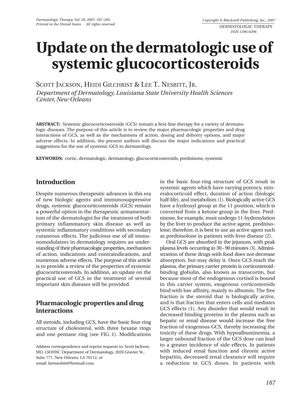Update on the Dermatologic Use of Systemic Glucocorticosteroids
July 2007
in “
Dermatologic Therapy
”

TLDR Systemic glucocorticosteroids are a primary treatment for various skin conditions but require careful management due to potential side effects and relapses.
In the 2007 document, the authors provided a comprehensive review of systemic glucocorticosteroids (GCS) in dermatologic applications, discussing their pharmacologic properties, mechanisms of action, dosing, delivery options, and adverse effects. They highlighted that GCS remained a first-line therapy for various skin conditions, despite the availability of new treatments. The document detailed the structural modifications of GCS that influence their potency and side effects, and the importance of understanding these to use GCS judiciously. It also discussed the management of side effects such as osteoporosis, growth retardation, and psychiatric issues, and provided specific recommendations for the use of GCS in conditions like lupus erythematosus, bullous pemphigoid, pemphigus, psoriasis, pyoderma gangrenosum, and sarcoidosis. The authors emphasized the need for careful management of GCS therapy due to potential relapses and side effects, and the necessity of considering alternative or adjunctive therapies. They also noted that while systemic GCS can be effective for acute, severe dermatoses and chronic inflammatory diseases, their long-term use is associated with significant adverse effects, which can be minimized with appropriate measures and transitioning to steroid-sparing regimens when possible.




